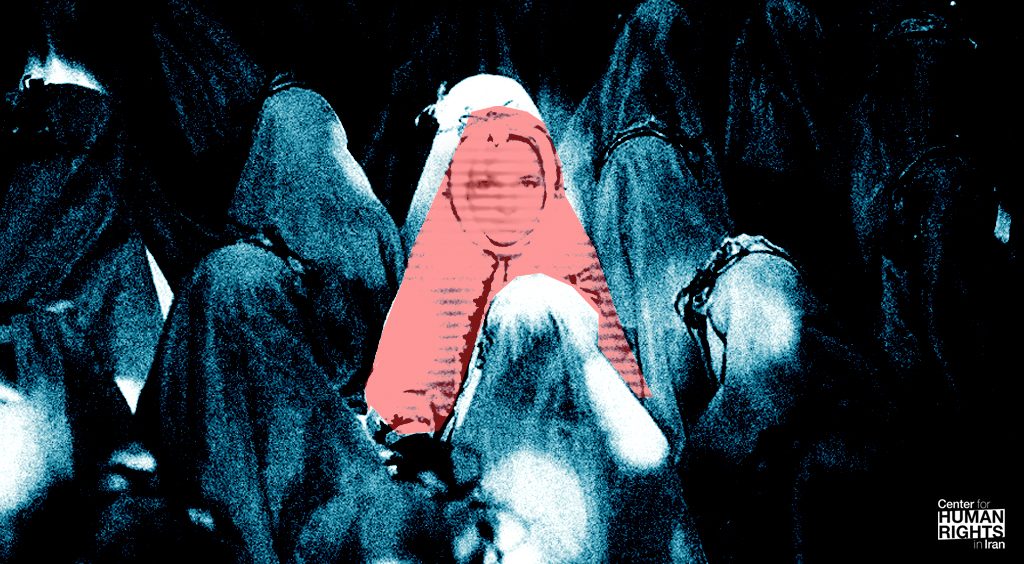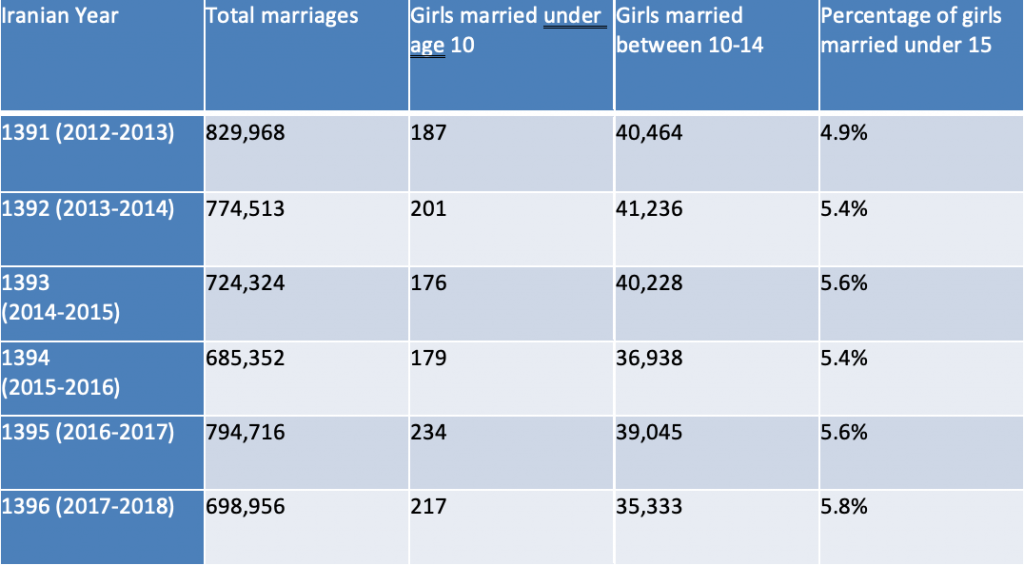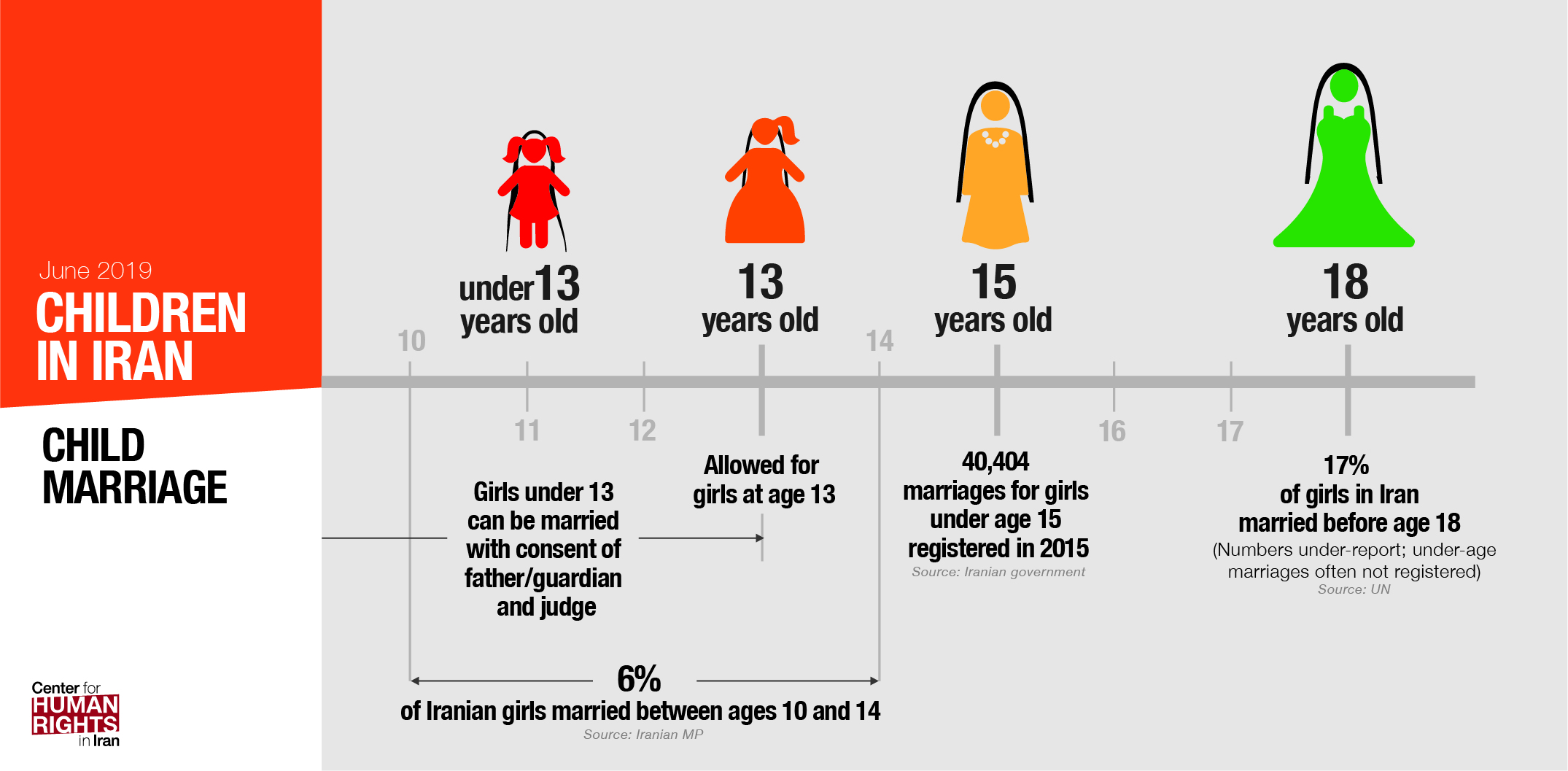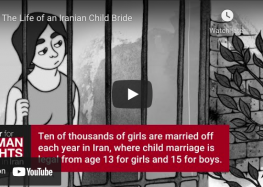Easy State Loans Prompting Surge in Child Marriages in Iran
 Child Marriages Rise Four-Fold as Parents Marry Off Their Children to Receive Loans
Child Marriages Rise Four-Fold as Parents Marry Off Their Children to Receive Loans
Easily available loans provided by state-owned banks to cover marriage expenses are resulting in a huge surge in child marriages in Iran—a country that already has large numbers of girls being married off by their parents at age 13 and younger.
Iranian state statistics show that registered child marriages have risen fourfold as parents arrange marriages for their children in order to get the loans.
Girls can be legally married at age 13 in Iran—younger with the permission of the father or male guardian and a judge—and boys can be married age 15.
In April 2020, Bank Maskan announced it will offer 100 million tomans ($23,720 USD) in marriage loans to couples who marry this year, payable in seven years at 4 percent interest, based on state guidelines.
These loans come at a time when many Iranians are suffering severe economic hardship. The COVID-19 pandemic hit Iran when it was already facing significant economic difficulties from international sanctions and longstanding economic mismanagement. As a result, applications for the loans, which are extremely large by Iranian income standards, have never been higher.
Even though girls from age 13 (and younger) and boys from age 15 are legally able to marry in Iran and therefore qualify for the loans, the money is paid out to their parents, who by law are still their legal guardians until they reach 18. This has created a huge opportunity for impoverished parents to marry off their children for financial gain.
No Action Taken by Government Even Though Officials Register Alarm
In a letter to President Hassan Rouhani in June 2020, Sports and Youth Minister Masoud Soltanifar said: “Central Bank reports, as well as field surveys and media monitoring based on statistical analysis show that the number of marriage loans from applicants over the age of 60 and under of 15, which are out of the ordinary age of childbearing, is increasing. In view of the government’s goal to facilitate timely marriage of young people, please order the cabinet and notify the Central Bank to set the age qualification for loan applicants from 18 to 40 years and grant loans only to those getting married for the first time.”
(The government has sought to encourage marriage, in response to the growing number of couples cohabiting without marriage licenses in so called “white marriages,” as well as child bearing, in response to the country’s dramatically declining birth rate.)
In response, Rouhani ordered First Vice President Eshagh Jahangiri and the Plan and Budget Organization to modify the rules. In a statement from his office he wrote:
“Immediately amend the bylaws or, if necessary, the law itself, or raise the matter at a meeting of the Economic Coordination Council, so that the age of applicants for marriage loans is between the ages of 18 to 40 years only.”
However, no action has yet been taken. The website for marriage loan applications, which was set up by the Central Bank of Iran and lists more than 30 participating banks where couples can apply for the marriage loans, does not state any age requirements under the terms and conditions.
Vice President for Women and Family Affairs Masoumeh Ebtekar and others have raised alarm bells regarding the impact of the loans on children.
“Because of the increase in the amount of marriage loans we expect underage marriages to increase,” Ebtekar said on June 27, 2020. “The reason for this is that the parents receive a portion of that loan, and God forbid, some of them could be exploiting their children in these difficult times.”
She added: “Unfortunately, one of the social scars in our society is the existence of child brides and there are even marriages taking place before the age of puberty, before physical or intellectual maturity, and some of them are never registered.”
In 3-month Period, 7300+ marriages of 10-14-Year-Old Girls
In December 2019, Deputy Sports Minister for Youth Affairs Mohammad Mehdi Tondgouyan had warned about a jump in child marriages because of the increase in marriage loans.
Tracking official figures for registered marriages over the last few years, he noted that a steady increase in child marriages closely correlated with an increase in loans. He said according to statistics for the Iranian year 1396 (March 21, 2017- March 20, 2018), the number of girls between the ages of 13 and 15 who received marriage loans was 51.
Yet only a year later, “In 1397 (March 21, 2018- March 20, 2019), concurrent with the increase in the amount of marriage loans to 15 million tomans ($3,558 USD), the number of loan recipients rose to 3,432 girls under the age of 15.
“From the start of this Iranian year (March 21, 2019) up to August 22, 2019, there were 4,460 girls under 15 who received marriage loans, Central Bank figures show.
“If this trend continues, by the end of the year (March 20, 2020) we expect to see this number increasing to 12,000 girls under 15 – that would be a triple or quadruple increase.…Figures show that the increase in the amount of [marriage] loans has led to a sharp increase in child marriages, such that in the past year it rose four-fold in some parts of the country.”
Indeed, according to the Statistical Center of Iran’s quarterly report for Spring 1399 (March 21, 2020 – June 20, 2020), there were 7,323 marriages registered during this period with girls aged 10 to 14 years, up from 5,968 in the winter and 6,210 in the fall.
(These numbers include only officially registered marriages and accordingly are significant undercounts; in many cases, especially in the less developed provinces, families do not register child marriages, only officially registering them after the bride is older.)
Huge Financial Windfall for Impoverished Families, Girls Pay the Price
The spread of poverty and a sharp drop in people’s purchasing power has prompted many families to seek new sources of income. For many, a marriage loan of this size would be a huge financial windfall.
“In our country, a family of four earning less than about 10 million tomans ($2,372 USD) per month is living under the poverty line,” Hamidreza Emamgholitabar, the Controller for the Supreme Assembly of Workers Representatives, a body of labor representatives elected by officially-recognized unions, said in an interview with Shahrara News on September 26, 2020.
The labor official continued: “[Yet] a family of four can optimistically expect only three million tomans ($711.6 USD) a month. …Under these circumstances, workers need an extra six to seven million tomans a month in order to be able to purchase items such as mobile phones for their children (to attend online classes during the pandemic) because they don’t have the means to pay for them in installments.”
(Because of the COVID-19 pandemic, most schools are closed and children at home are taught online. However, many families cannot afford digital devices for accessing online classes, resulting in children idle at home and deprived of an education.)
“If workers can’t improve their financial situation, they will prevent children from continuing their education because in the absence of any support for the vulnerable sectors of society, survival takes priority and education becomes much less important,” the official added.
Figures published in January 2020 by the state-owned Pupils Association News Agency, PANA, show that 17,486 girls between ages of 10 and 14 got married in the first six months of the Iranian year 1397 (March 21, 2018-March 20, 2019) – that was seven percent of all marriages in Iran during that period.
The National Organization for Civil Registration figures for child marriages between 2012 and 2018 are as follow:

There were 54 marriages with girls under the age of 15 registered in Khoda Afarin county in East Azerbaijan during the past year that ended March 21, 2020, according to the local governor, Ali Amiri.
“The proliferation of child marriages has turned into a problem in this county” Amiri told the Iranian Students News Agency, ISNA, on October 14, 2020.
“The health and education authorities need to carry out studies and field research to find the reasons behind child marriages,” he added.
Lawyer: Child Marriages in Iran No Longer Just a Rural Phenomenon
A lawyer in Tehran who specializes in children’s rights told the Center for Human Rights in Iran (CHRI) that child marriages, previously primarily a rural tradition, was now spreading to urban areas.
“Until now, child marriage was a phenomenon mostly seen in villages and small towns but now it has become a big problem among those living in the margins of the cities,” the lawyer said on condition of anonymity.
He added: “Policies, such as increases in marriage loans, are only designed to encourage families to get husbands for their daughters at a young age, send them out of the house and make a financial gain. Many of these children don’t even understand what marriage loans are…
“The damages caused by marriages between young girls and older men will appear years later. In fact, as child marriages increase, so do divorces at a young age.”
The lawyer said in a recent divorce case he represented a 17-year-old girl who had been forced to marry at the age of 15 to her father’s 55-year-old friend.
“Evidence shows that the father received a marriage loan for his daughter but two years after he married her off, he and the husband were arrested for dealing drugs and sentenced to 20 years in prison. It cannot be said for certain, but it’s possible that the marriage loan was used as investment in drug trafficking and that could be why my client’s father and husband are now in jail.”
A headmaster with many years of experience in a school for girls in a rural part of North Khorasan Province also told CHRI that marriage loans had become an irresistible source of income in harsh times.
“Low wages and a bad economy have made people hungry for any chance to get handouts from the government,” she said in an interview. She asked not to be identified by name.
“The marriage loans are making people close their eyes to the damage child brides suffer from ending their education at a young age. Many families believe girls cannot play any effective role in improving their finances but a marriage loan is a good way to help the families financially.”
The headmaster noted that in the past many marriages under the age of 15 were performed in religious ceremonies, but not officially registered. But now many are being registered to qualify for a loan.
Child Marriages Persist in Iran Despite Societal and International Condemnation
Civil society groups in Iran have fought hard to build a consensus in the country against child marriage—with the support of many Parliamentarians. Yet in December 2018, two years after it was introduced to Iran’s Parliament, the Parliamentary Committee for Judicial and Legal Affairs rejected a bill to ban marriage for girls under the age of 13, even though a parliamentary majority had approved the general outline of the proposal in September 2018.
MPs at the time noted that opponents of the bill—primarily religious authorities—claimed it was not in accordance with Sharia Islamic law and that it promoted assimilation to Western values.
However, when the bill was first introduced in 2016, some well-known conservative clerics expressed support for the notion of banning child marriages. And after a particularly horrific case of the abuse of a child bride was reported in 2019, Ayatollah Asadollah Bayat Zanjani issued a fatwa stating that child marriage violates the principles of Islam. Yet theological opinions on child marriage remain divided in Iran, and there are multiple ayatollahs who can issue fatwas. As such, Shia Muslims can choose which of these ayatollahs to follow as their point of reference for religious matters.
There have been continued efforts by parliamentarians to at least ban the marriage of girls who are under the age of 13—regardless of whether they have the permission of their father and a judge—but even those efforts have so far faced implacable opposition by religious conservatives. While there have been sporadic reports that a new bill is being drafted to address child marriage in Iran, no draft has been made available to the public and no public legislative developments have occurred on the issue.
The UN has strongly condemned the persistence of child marriage in the Islamic Republic. In the July 2020 report by the UN’s top Iran expert, Special Rapporteur Javaid Rehman stated that child marriage in Islamic Republic remained an issue of “primary concern” for the UN.
According to the UN Convention on the Rights of the Child (UNCRC), any person under the age of 18 is considered a child. In the Concluding Observations by the UN Committee on the Rights of the Child for the combined third and fourth Universal Periodic Review (UPR) reports on Iran, the Committee expressed “serious concern” that despite its previous recommendations, child marriage persisted, which “gravely violates rights under the Convention and places children, in particular girls, at risk of forced, early and temporary marriages, with irreversible consequences on their physical and mental health and development.”
“Uprooting the child marriage phenomenon requires a multi-dimensional effort in cultural, social and educational fields,” an Iranian child rights lawyer told CHRI. “But the most immediate step has to be the government putting an end to the law that in effect permits physical and psychological violence against young girls.”
The country’s current state-subsidized marriage loan programs are only exacerbating the child marriage crisis caused by this legislative and legal failure in Iran.







